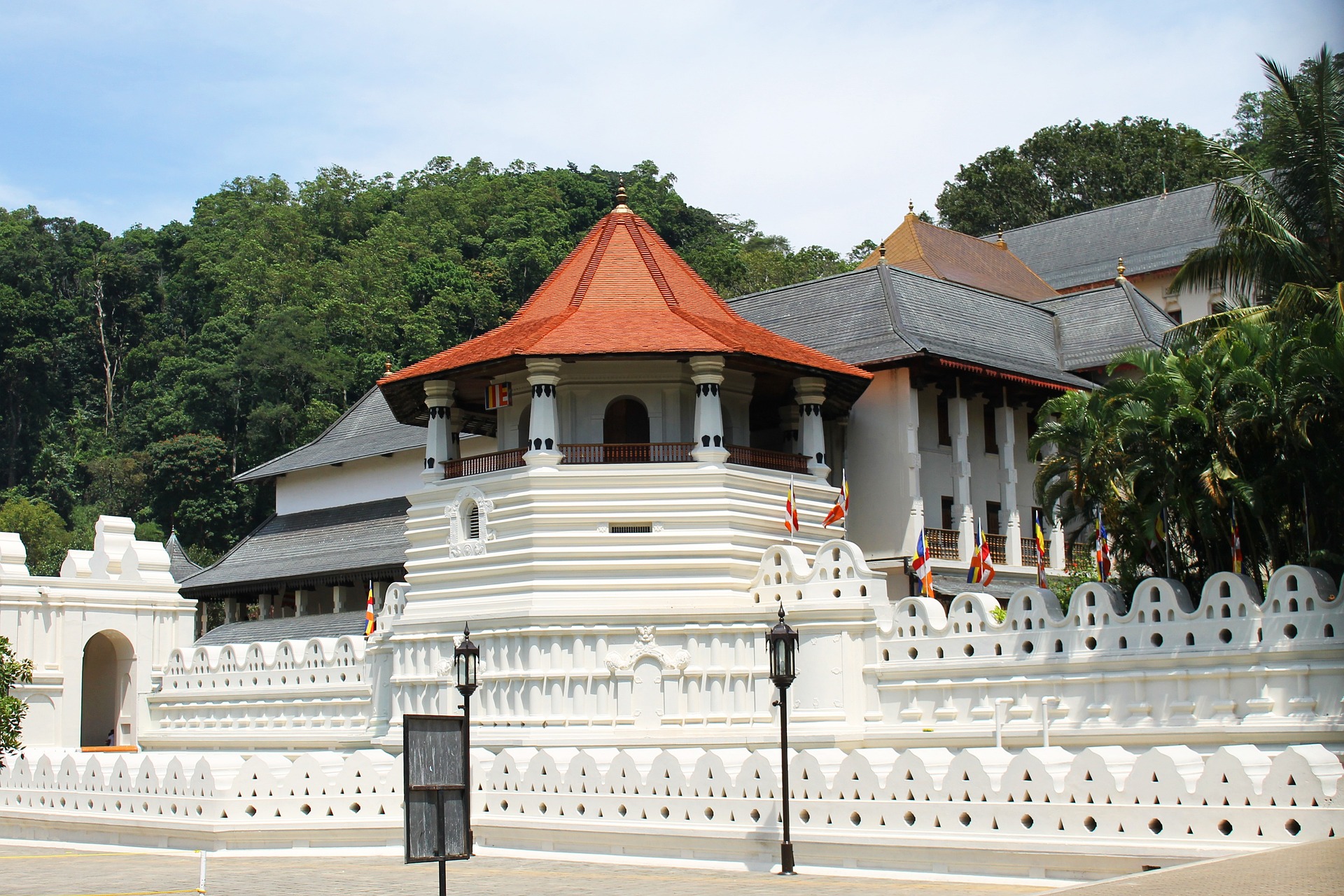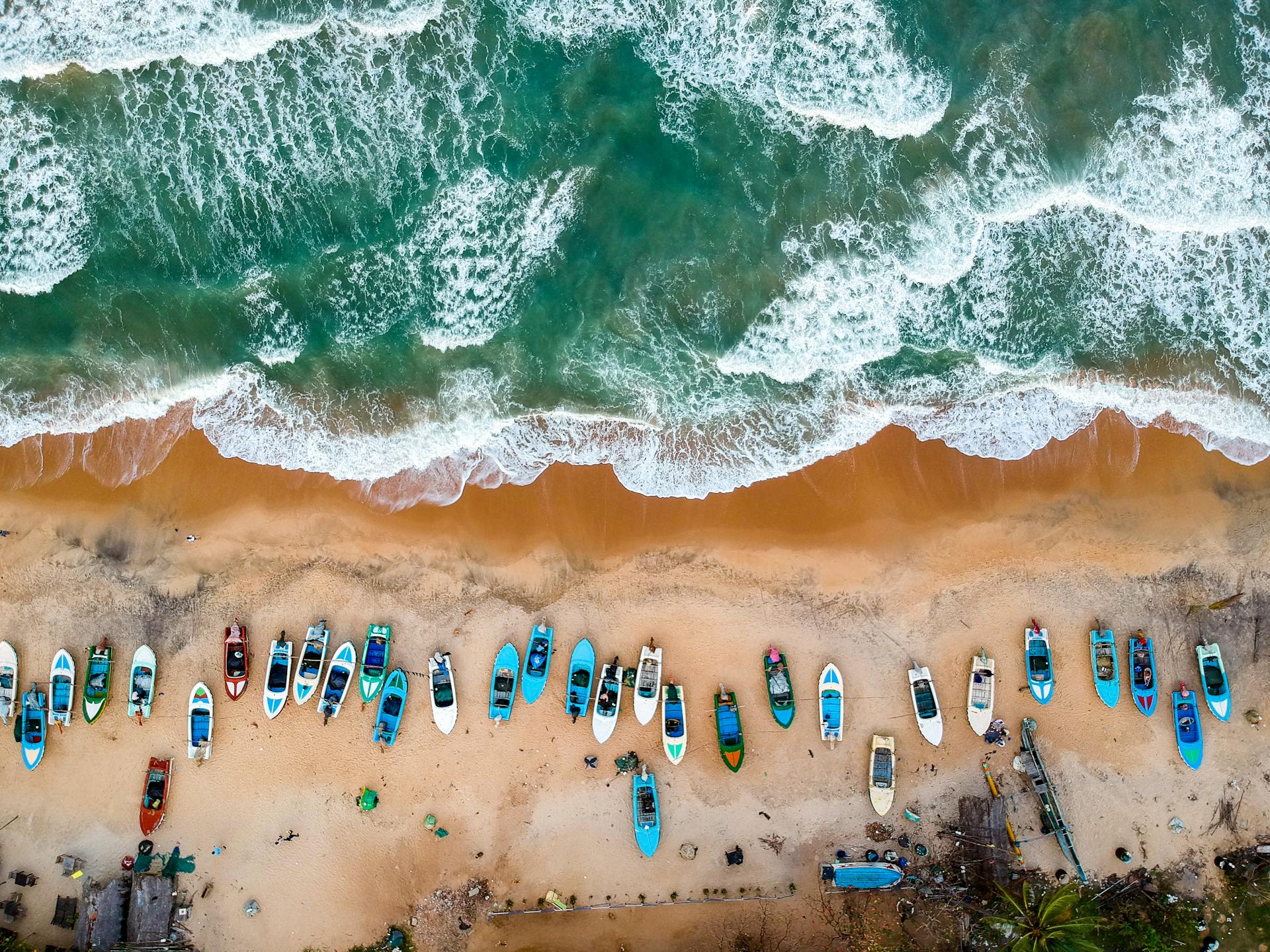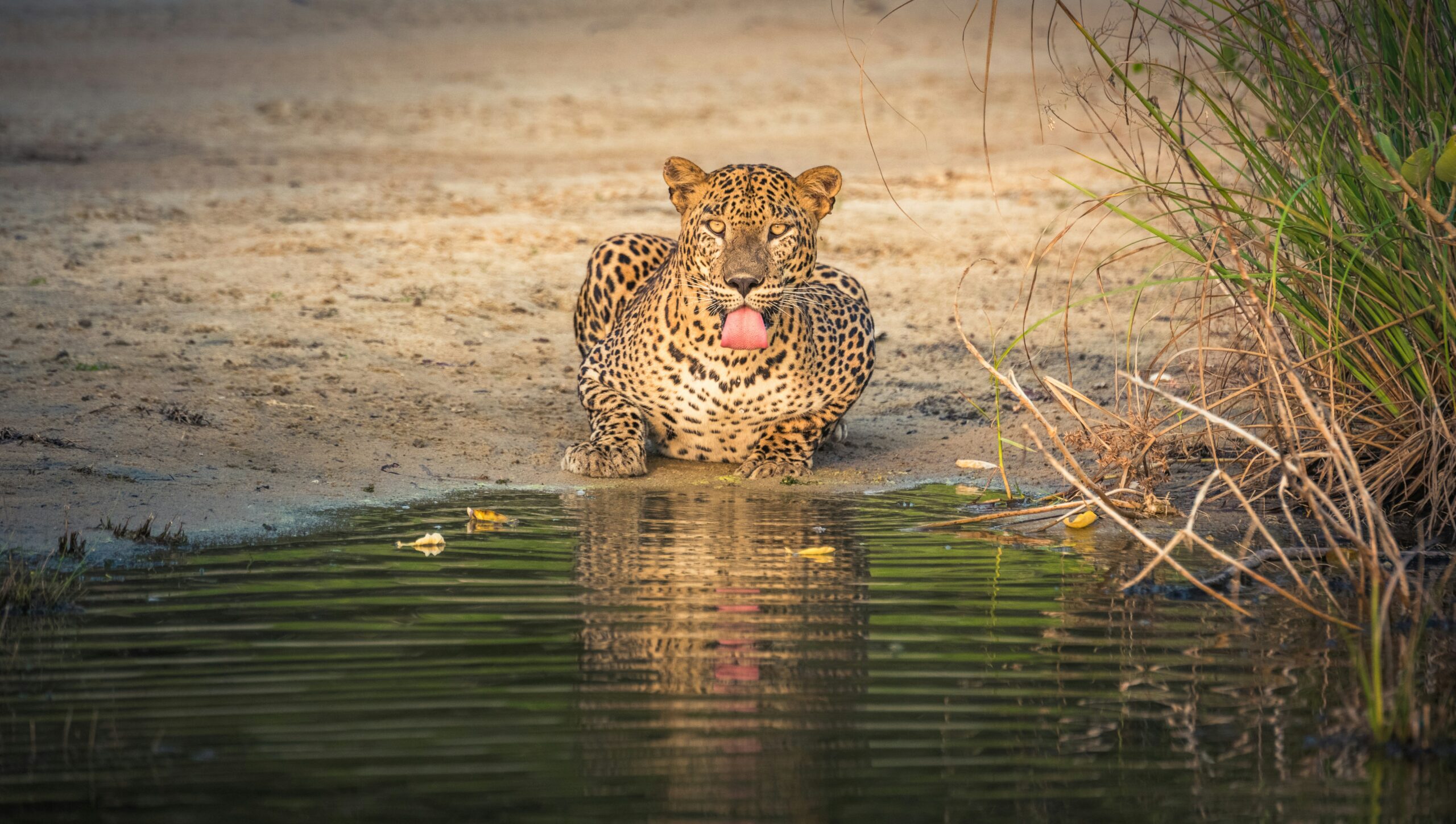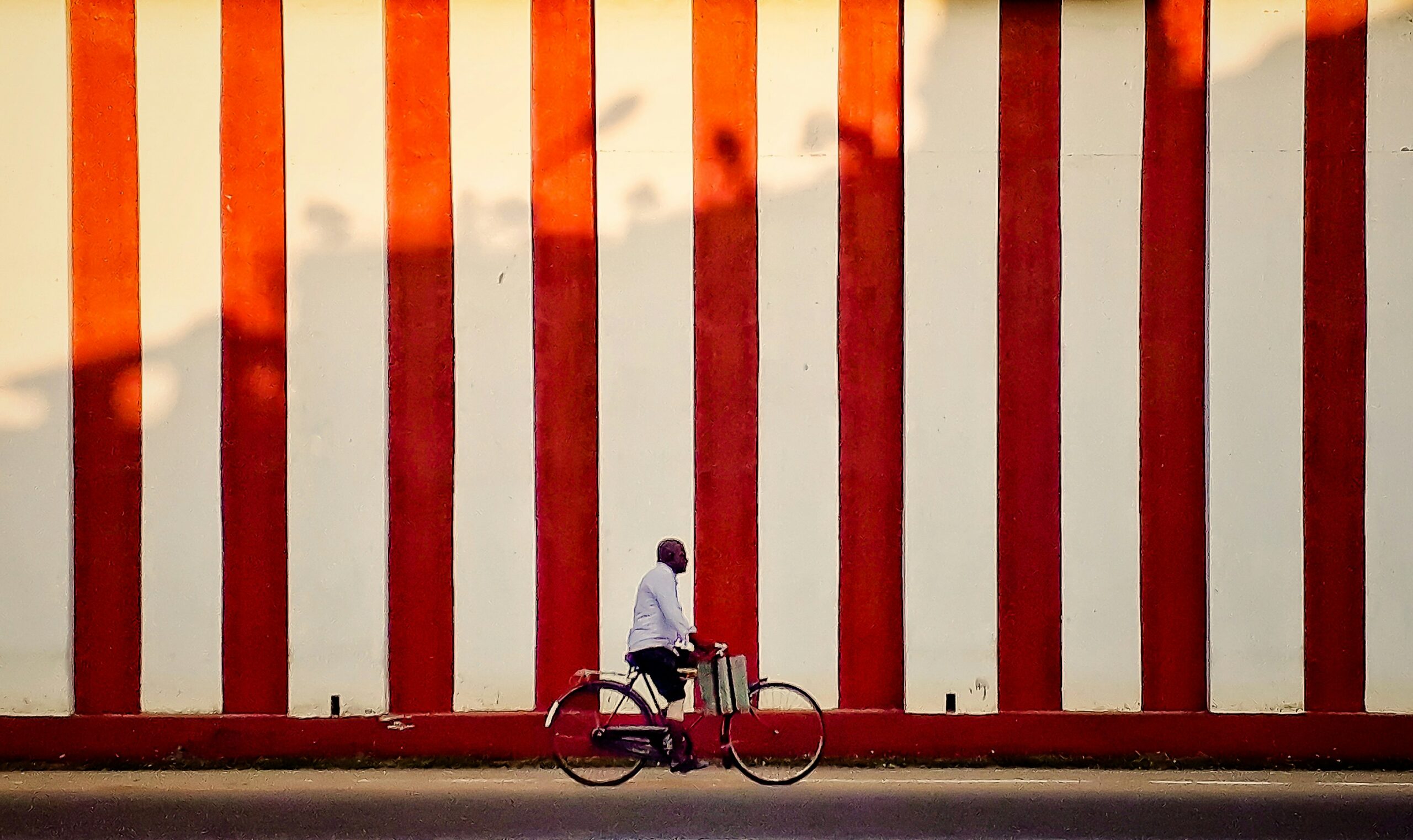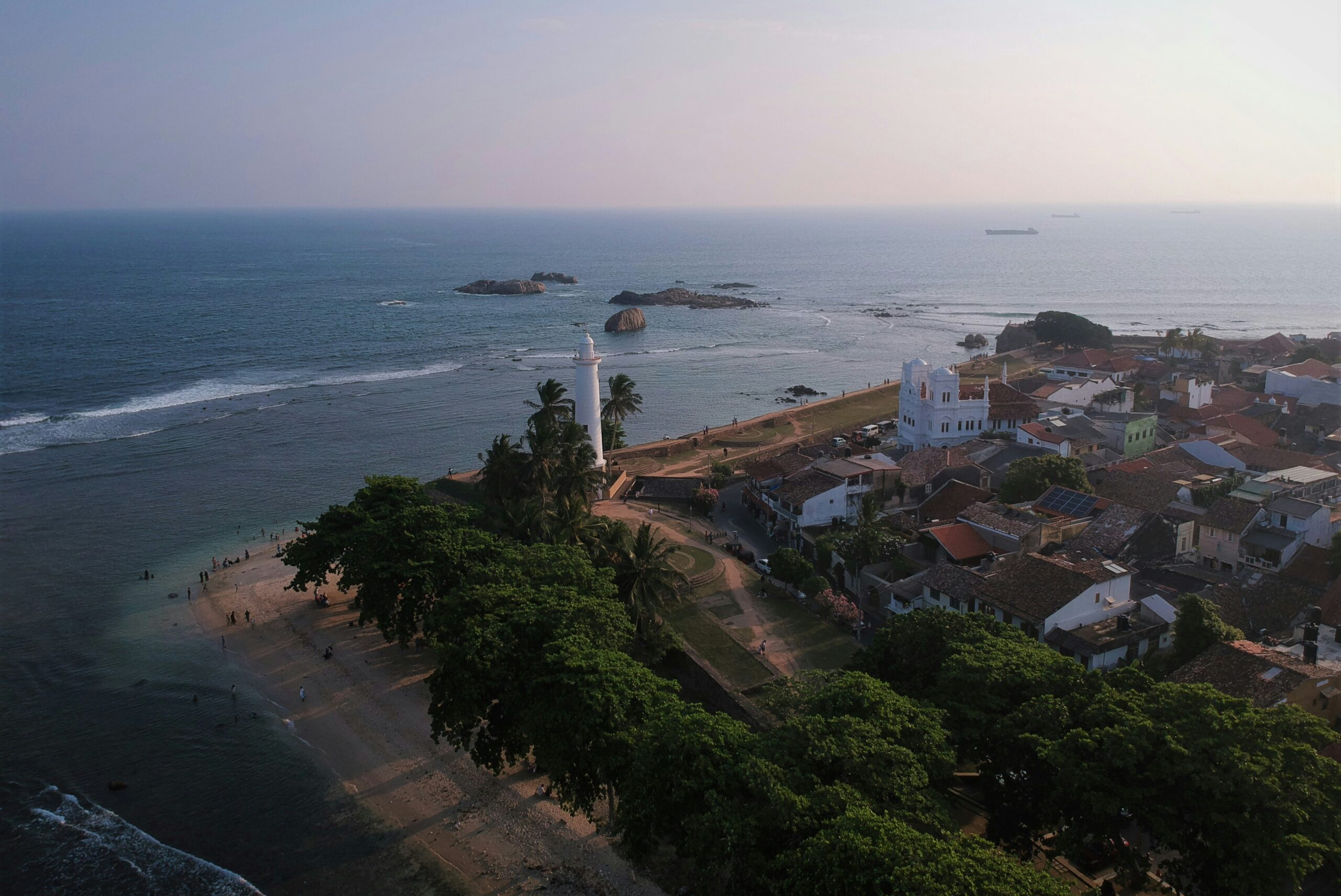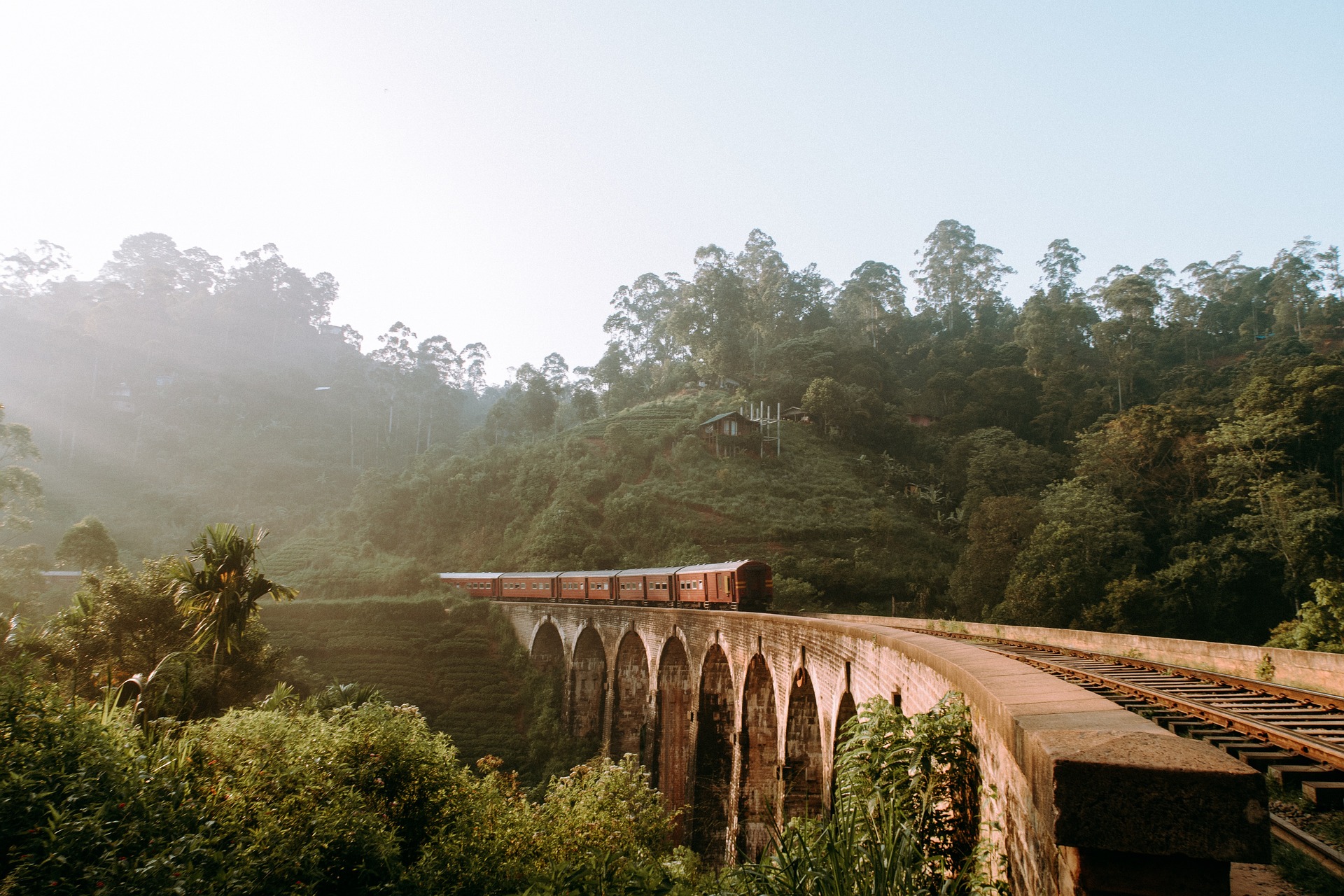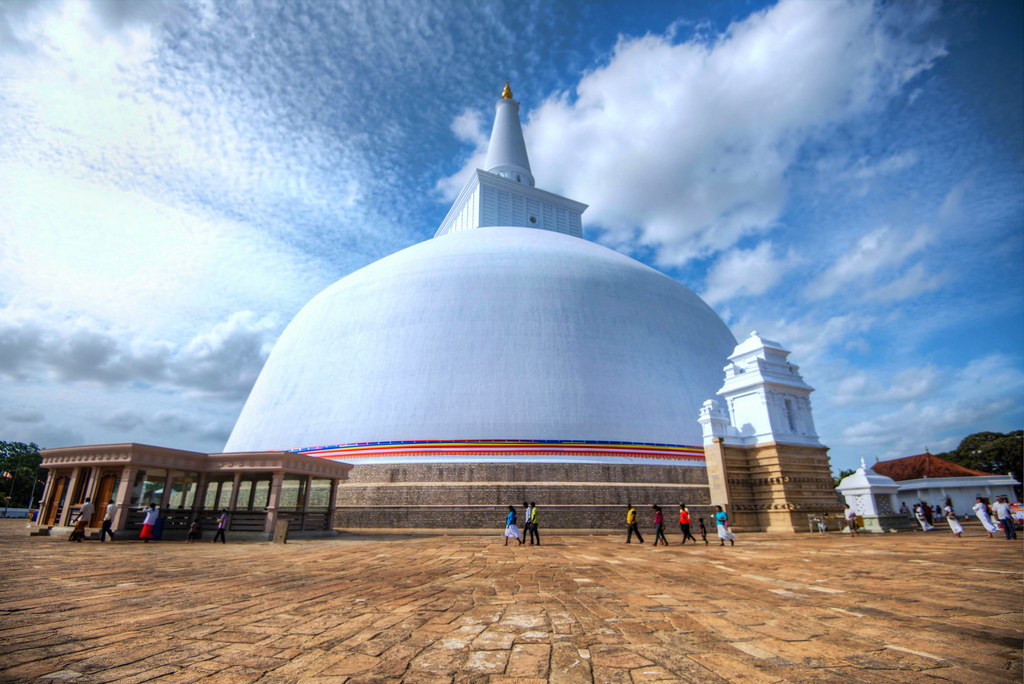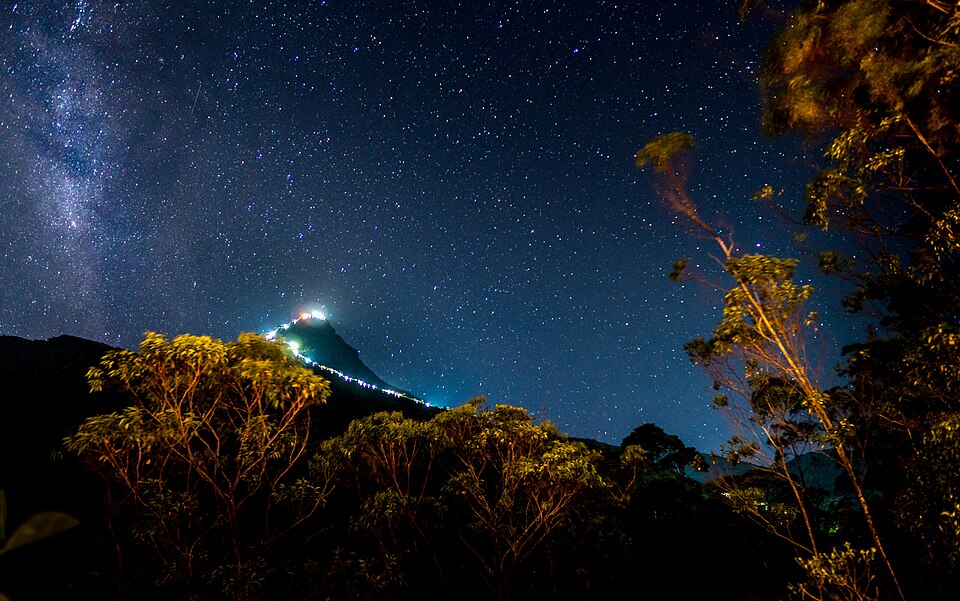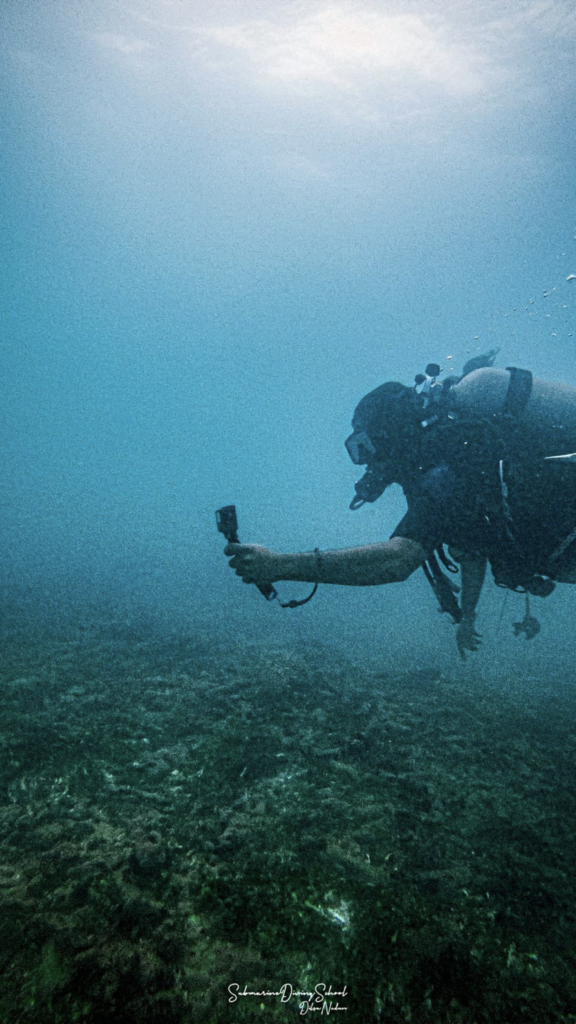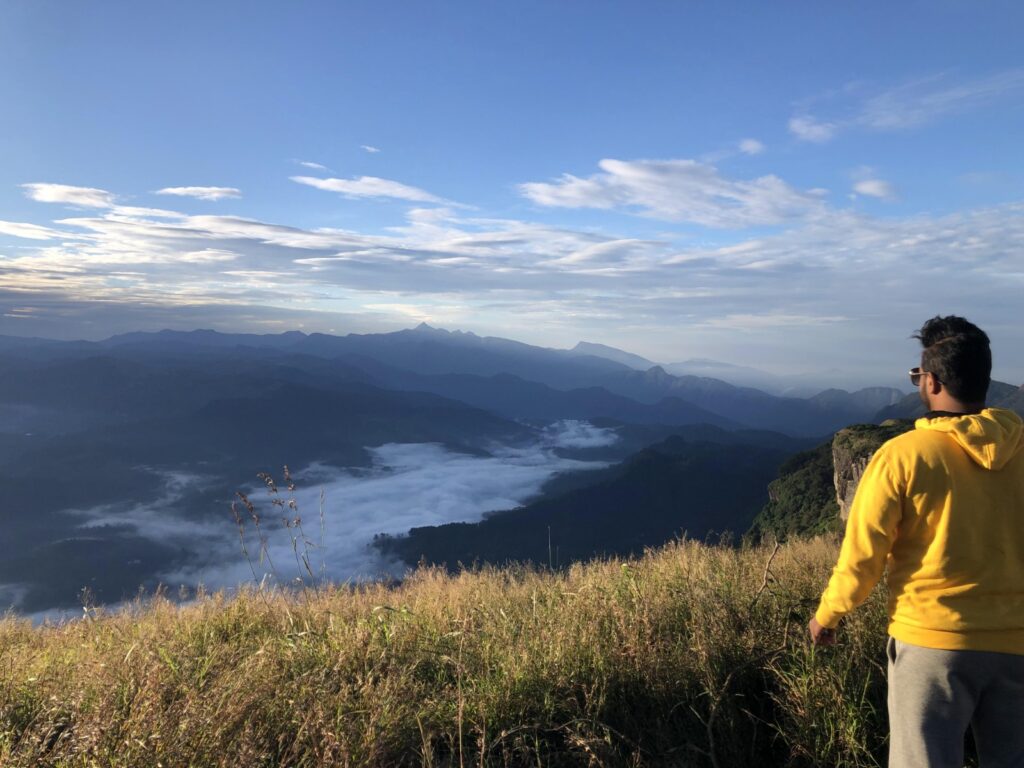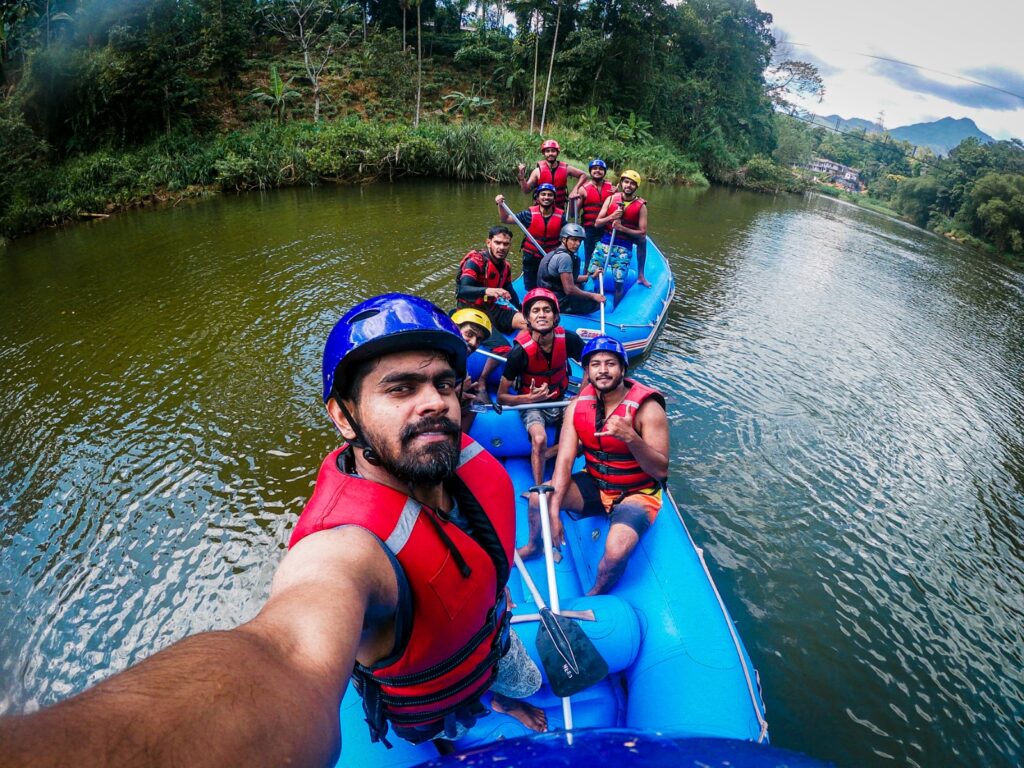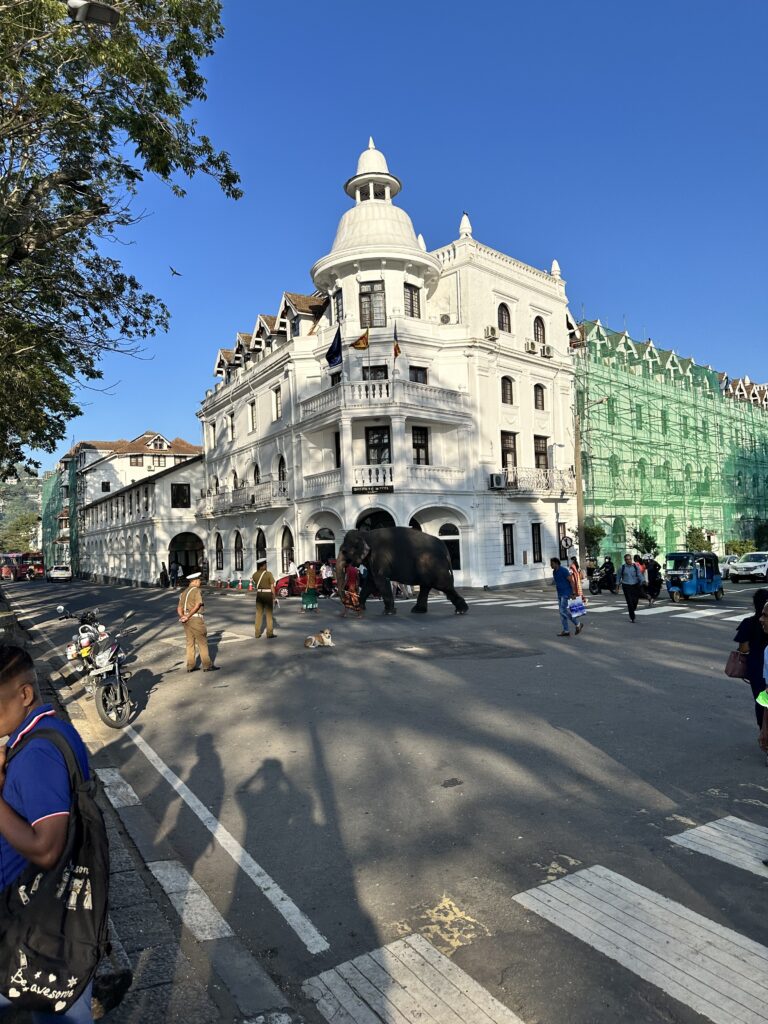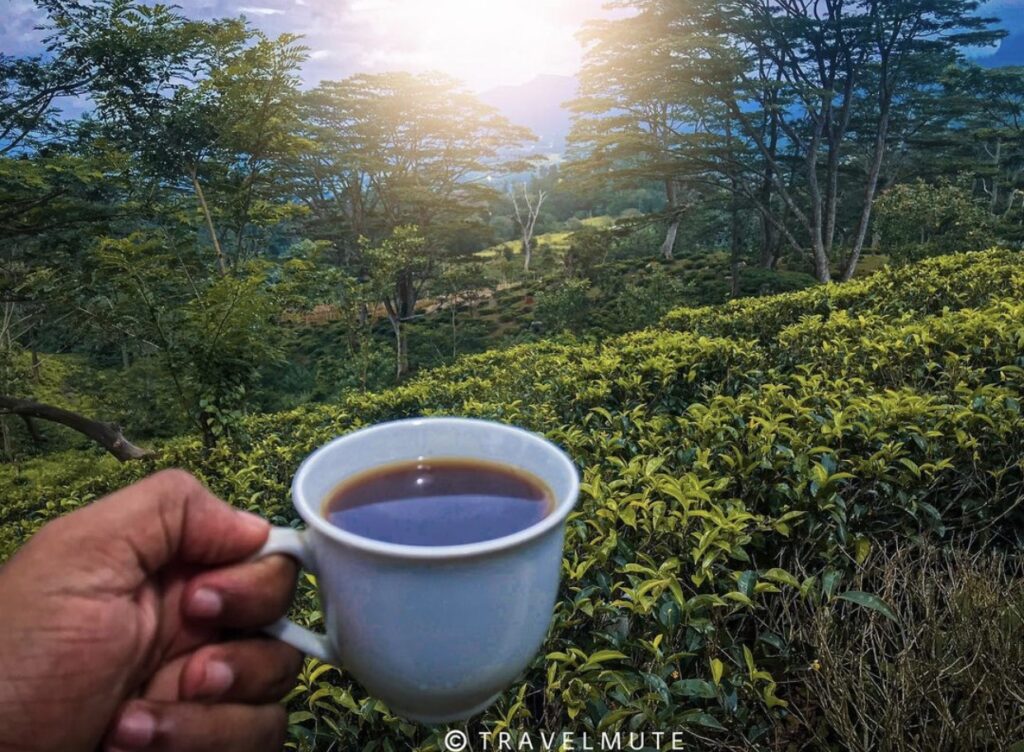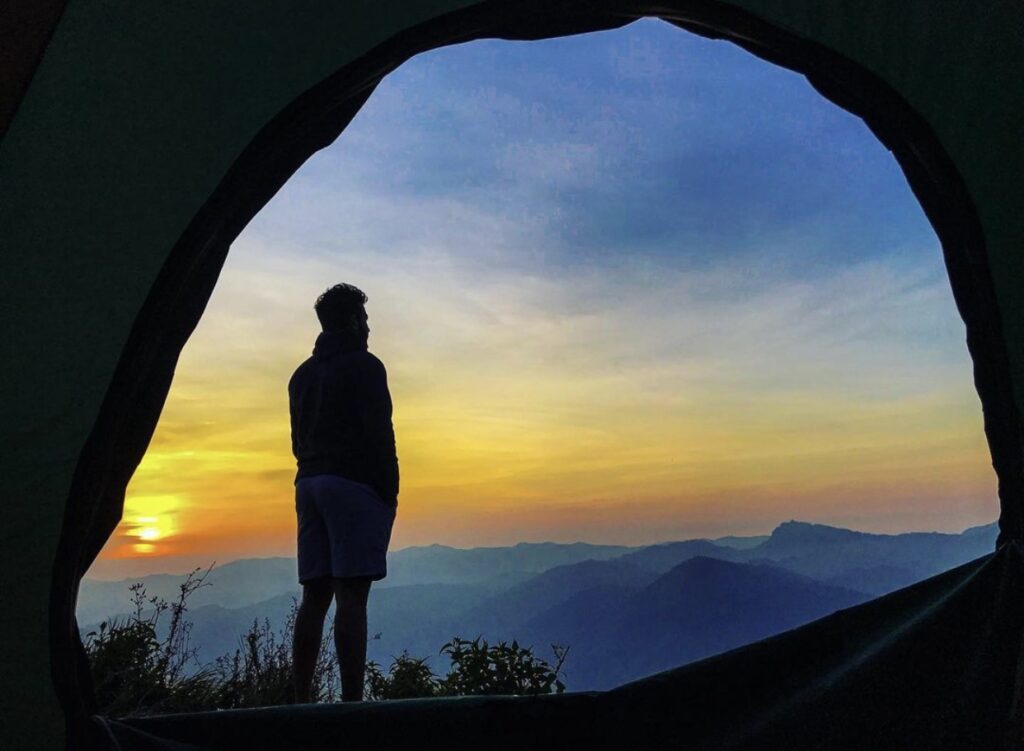Introduction
Sri Lanka’s Buddhist heritage spans over two millennia, offering travelers a rich tapestry of sacred sites and living traditions. From ancient capitals to mountain shrines, the island is dotted with temples and monuments that reflect its deep devotion to Buddhism. Pilgrims and history enthusiasts alike can explore well-preserved stupas, monasteries, and relics that date back to the 3rd century BCE whc.unesco.org. Many of these sites are recognized as UNESCO World Heritage locations for their historical and spiritual significance. In this guide, we profile seven key Buddhist pilgrimage sites – each unique in its legends, architecture, and cultural practices – and provide practical tips for visiting. Whether you’re seeking enlightenment or simply enriching experiences, Sri Lanka’s sacred sites promise an unforgettable journey into the heart of Buddhist tradition.
Anuradhapura – The Sacred City of Ancient Kings
Anuradhapura is the first ancient capital of Sri Lanka and one of the oldest continuously inhabited cities in the world. Founded around a cutting of the Bodhi Tree (the tree of enlightenment) brought from India in the 3rd century BCE, it flourished as the island’s political and religious center for over 1,300 years whc.unesco.org. The city’s sacred precinct is a UNESCO World Heritage Site, renowned for its enormous dagobas (stupas), monasteries, and the Jaya Sri Maha Bodhi – a direct descendant of Buddha’s fig tree, believed to be the oldest human-planted tree in the world. Anuradhapura’s significance to Buddhism is immense: it was here that kings built some of the tallest stupas on earth to enshrine holy relics, and where Buddhism took root as the state religion over two millennia ago.
What Makes It Special: The city’s temples and tanks (ancient reservoirs) evoke a grandeur that testifies to a civilization centered on Buddhism. Don’t miss Ruwanwelisaya, a gleaming white stupa 103 meters tall that ranks among the world’s tallest ancient monuments and houses sacred relics of the Buddha. Nearby, the Jetavanaramaya stupa (now partially in ruins) was once the third-tallest structure in the world when it was built in the 3rd century CE. The Sri Maha Bodhi Tree, planted in 288 BCE, is revered by Buddhists globally; devotees offer flowers and light oil lamps in its honor, seeking blessings and solace. The city’s layout of monasteries, bathing ponds, and carved stone shrines lets you walk in the footsteps of monks and kings from over 20 centuries ago. Anuradhapura’s enduring sacred atmosphere – especially around sunrise or sunset when prayers echo under ancient banyans – is often described as serene and timeless.
Best Time to Visit: The climate here is hot and dry for much of the year. The December to April period is generally pleasant, with slightly cooler temperatures and less chance of rain – ideal for exploring the expansive ruins. It’s wise to tour the open sites in the early morning or late afternoon to avoid midday heat. If you want to witness local religious fervor, plan around Vesak (May) or Poson Poya (June). During Poson – which commemorates the introduction of Buddhism to Sri Lanka – Anuradhapura and nearby Mihintale host thousands of pilgrims, and the city is illuminated with lanterns and devotional songs. (Poson can be crowded, but it offers a unique cultural experience.)
How to Get There: Anuradhapura lies about 205 km north of Colombo. By road, the journey from Colombo or the international airport takes roughly 4–5 hours by car
Additional Insights: As a sacred city, visitors are expected to dress modestly (covering shoulders and knees) when entering temple premises. The Sacred Bodhi Tree requires visitors to remove hats and shoes, and be respectful – it’s under continuous veneration, so join the locals in quiet worship. Anuradhapura is home to several annual temple festivals – for instance, the Aluth Sahal Mangallaya (New Rice Festival) at the Ruwanwelisaya, celebrating the first harvest of rice, usually in March. The city’s UNESCO status underscores its global importance; in fact, archaeologists are still uncovering artifacts that shed light on early Buddhist civilization here. A helpful stop is the Anuradhapura Museum (or the new archaeology museum) for context on the artifacts and statues you’ll see around the ruins. Official information can be found on the Sri Lanka Cultural Triangle website or the UNESCO World Heritage Centre page for Anuradhapura. Visiting this city truly feels like stepping back in time to Buddhism’s golden age in Sri Lanka.
Mihintale – Cradle of Buddhism in Sri Lanka
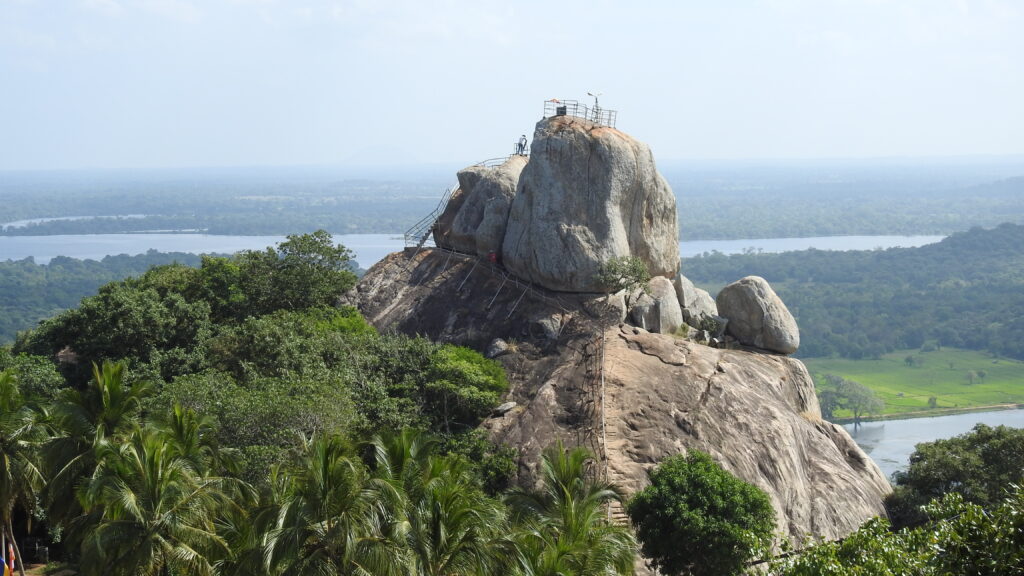
The Ambasthala Dagoba at Mihintale, where tradition says the Buddhist monk Mahinda met King Devanampiya Tissa under swaying palms.
Mihintale is a mountain peak and monastery 12 km east of Anuradhapura serenecolombo.orgbuddhanet.net. It is revered as the place where Buddhism first officially arrived in Sri Lanka. In 247 BCE, King Devanampiya Tissa of Anuradhapura encountered Arahat Mahinda (the son of Emperor Ashoka of India) on this very hill. Their historic meeting – on a full moon day in June – led to the king and his retinue embracing Buddhism, marking the start of Sri Lanka’s Buddhist lineage en.wikipedia.org. Today Mihintale is a pilgrimage site with ancient stone steps leading to the summit, where shrines now stand to commemorate the auspicious encounter. Scattered across Mihintale’s forested hill are ruins of one of the oldest monastic complexes in the country, earning it fame as the “cradle of Buddhism” in Sri Lanka.
What Makes It Special: Mihintale is often considered the world’s first declared sanctuary, as the converted King Tissa, inspired by Buddhist compassion, set aside the surrounding forest as a wildlife refuge in the 3rd century BCE. For pilgrims, the climb up Mihintale’s 1,840 granite steps is an act of devotion. Along the way you’ll see Kantaka Cetiya, an ancient stupa with intricate carvings at its four entrances, and the remains of a meditating monks’ refectory (with stone troughs that once held rice porridge). Near the summit is the Ambasthalaya, a small white dagoba (stupa) at the spot where Mahinda preached his first sermon to the king. A nearby plateau holds the Aradhana Gala – a large rock outcrop believed to be where Mahinda first appeared to the king. Climb a bit further to reach Mihintale Maha Seya, a grand stupa said to enshrine relics of the Buddha. The site also has one of the oldest hospital ruins in the world, complete with stone medicinal baths. The entire hill exudes an aura of peace. From the summit, you’re rewarded with panoramic views of Anuradhapura’s plains dotted with shining stupas in the distance – a sublime vista at sunrise or sunset.
Best Time to Visit: Poson Poya (the full moon in June) is Mihintale’s peak pilgrimage season. During the Poson festival, tens of thousands of devotees climb the hill, chanting and lighting lamps, to celebrate Buddhism’s arrival. It’s a vibrant time to visit (expect crowds, free food stalls, and ceremonies), though if you prefer tranquility, avoid the Poson week. Generally, the dry season from May to September makes for easier climbing (less rain on those stone steps). April and May are very hot, so aim for early morning or late afternoon climbs when it’s cooler and the lighting on the surrounding landscape is magical. The site is open roughly 7:00am to 7:00pm. Sunrise hikes (starting in the dark before dawn) are possible and give you a spiritual start to the day.
How to Get There: Mihintale is easily reached from Anuradhapura, which is the nearest major town. It’s about 12–13 km away – roughly a 20-minute drive or bus ride east on the Anuradhapura–Trincomalee road.
Additional Insights: The entrance fee for foreign visitors is modest (around LKR 1000), which includes access to the museum near the base (worth a quick look for its archaeological finds and scale models). You must remove shoes when ascending the final sections near sacred structures – the stone can get hot, so bring socks or come in the cooler hours. Monkeys abound on the hill, so secure your belongings. A special custom here: pilgrims often stop at Kaludiya Pokuna, a serene black water pond at the foot of Mihintale, for a cleansing ritual before climbing. Mihintale, together with Anuradhapura, has been nominated to extend UNESCO recognition due to its shared heritage. Whether you visit during a festival or a quiet day, Mihintale’s atmosphere – as the birthplace of Buddhism in Sri Lanka – is profoundly inspiring.
Digavapiya (Dighavapi) – Ancient Stupa of the East
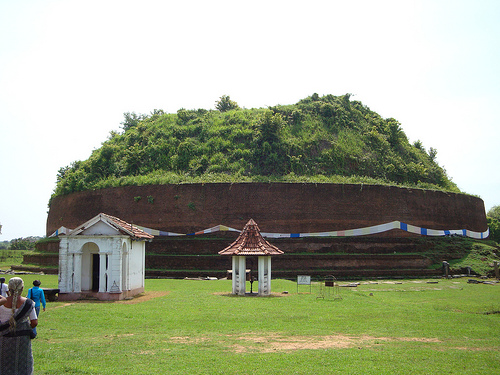
21 July 2010
The Digavapiya stupa in Eastern Sri Lanka, currently under restoration to revive its ancient glory.
Digavapiya (often spelled Dighavapi) is a remote but revered Buddhist shrine located in the Ampara District of Eastern Province. It is one of the island’s Solosmasthana – the sixteen sacred sites believed to have been hallowed by visits of the Buddha en.wikipedia.org. According to Sri Lankan chronicles, Lord Buddha visited this area on his final journey to the island (in the 6th century BCE). He spent time meditating here with 500 arahant disciples, sanctifying the ground with his presence en.wikipedia.org. In the 2nd century BCE, King Saddha Tissa (brother of the famous Dutugemunu) built a large stupa at Digavapiya, enshrining relics of the Buddha on the very spot where the Enlightened One had meditated en.wikipedia.org. Over the centuries, Digavapiya became an important pilgrimage site for the kingdom of Ruhuna and the East, though it lay neglected during periods of conflict. Today, visitors to Digavapiya will find a massive circular stupa mound – still being restored to its ancient form – amid rural farmlands, symbolizing the deep roots of Buddhism in Sri Lanka’s eastern regions.
What Makes It Special: Digavapiya’s claim to sanctity is its direct connection to the Buddha’s life story in Sri Lanka. It is one of the earliest Buddhist shrines on the island, with a history stretching back over 2,200 years. For Buddhists, the site carries the aura of Buddha’s presence and the merit of countless pilgrims’ veneration. The stupa itself, though not yet fully reconstructed, is impressive in scale – originally over 30 meters high. Archaeological excavations have revealed its ancient brickwork and surrounding monastic ruins. Visiting Digavapiya offers a more off-the-beaten-path pilgrimage experience: unlike the busy temples of the Cultural Triangle, here you may find only a handful of devotees and resident monks, chanting prayers in the breeze of paddy fields. There is a modest modern shrine hall and Bodhi tree at the site where locals perform rituals. The simplicity of Digavapiya – a grassy mound with scaffolding, set under an open sky – invites quiet reflection on the endurance of faith through time. It’s also noteworthy that Digavapiya is mentioned in the Mahavamsa (Great Chronicle) as a place consecrated by the Buddha and later patronized by kings, underscoring its mix of legend and history en.wikipedia.orgen.wikipedia.org. As of recent years, a major restoration project is underway to rebuild the stupa dome to its former glory (expected to be completed around 2023 en.wikipedia.org). Future travelers might see a gleaming white dagoba here, akin to Anuradhapura’s, signifying a renaissance of this ancient gem.
Best Time to Visit: Eastern Sri Lanka has its own climate pattern. The best season to visit Digavapiya is from April to September, when the eastern dry season brings sunny skies and relatively dry weather. From October through early January, the Northeast Monsoon can bring heavy rains to the region (and potentially make travel difficult on dirt roads). If you’re visiting around July/August, you might coincide with the “Esala” festival season, when nearby temples hold celebrations – however, Digavapiya itself currently has a modest annual ceremony on Poson Poya (June) to commemorate Buddha’s visit, which is worth attending if you’re in the area. Aim to visit in the morning or late afternoon to avoid midday heat (temperatures can soar above 32°C). The sunrise over the paddy fields and the silhouette of the stupa is quite picturesque, and in the evening you might catch devotional chanting as villagers gather for worship.
How to Get There: Digavapiya is in a rural part of Ampara District. The nearest town with facilities is Ampara, about 25–30 km away to the west. By car, it’s roughly a 1-hour drive from Ampara town to Digavapiya, through countryside roads. If coming from Arugam Bay/Pottuvil (a popular east coast beach spot), the drive is about 70 km (1.5–2 hours). From Colombo or Kandy, expect a long journey (7+ hours) as you must traverse into the Eastern Province.
Additional Insights: Dress respectfully (as always at temples) – white clothing is common among pilgrims here. The site has minimal tourist infrastructure: a small information board, maybe a few stalls selling snacks or lotus flowers on poya days. It’s a good idea to carry water and snacks, and be prepared for basic facilities. Despite its quietness, Digavapiya’s historical significance resonates strongly. According to legend (and inscriptions), the Buddha’s bathing robe was buried here by Lord Indra after the Buddha’s visit, adding to the sacred lore. Also, King Dutugemunu is said to have renovated this stupa in the 2nd century BCE, and medieval rulers like Parakramabahu I sent emissaries to refurbish it – a testament to how revered Digavapiya remained across eras en.wikipedia.org. If you’re enthusiastic about archaeology, look out for nearby ruins like stone pillars and guard stones half-hidden by grass; they hint at a once-thriving monastery around the stupa. A visit to Digavapiya is as much about experiencing Sri Lanka’s Buddhist heartland off the tourist trail as it is about the site itself. You’ll likely come away with a sense of peace and a deeper appreciation for the island’s spiritual history.
Rajagala – The Remote Monastic Wilderness
Ancient stone pillars mark the ruins of Rajagala’s sprawling monastery, hidden deep in the Eastern wilderness.
Rajagala (meaning “Monarch’s Rock”, and also known as Rajagalathenna) is a vast ancient monastic complex tucked away in the forests of the Eastern Province. Spread over a 1,600-acre hilly terrain, Rajagala is second only to Mihintale in size among Sri Lanka’s monastic sites. Its history dates between the 3rd century BCE and 10th century CE, with over 600 prehistoric ruins, monuments, and artefacts identified here – from stupas and chapter houses to natural caves once inhabited by monks. Rajagala remained largely forgotten and overgrown by jungle for centuries, only rediscovered by archaeologists in the 20th century. Recent excavations have unveiled a treasure trove of inscriptions and relics, catapulting Rajagala to fame as an archaeological and spiritual gem. Significantly, Rajagala is believed to be the final resting place of Arahat Mahinda – the very monk who brought Buddhism to Sri Lanka. A stone inscription on-site claims that a stupa at Rajagala enshrines the ashes of Arahat Mahinda and his close disciple Itthiya. This discovery makes Rajagala an immensely sacred ground for Buddhists, as well as a fascinating destination for those intrigued by history off the beaten path.
What Makes It Special: Rajagala offers a unique blend of adventure and spirituality. Unlike the manicured UNESCO sites, visiting Rajagala feels like entering an open-air museum in the wild. To explore, one must hike through wooded trails where moss-covered stone pillars stand silently amid trees. You’ll encounter dozens of drip-ledged caves – these served as meditation quarters for monks over 2,000 years ago, many bearing Brahmi script inscriptions and even faint paintings. Among the ruins are the remains of stupas of varying sizes, a refectory, image houses, and an intriguing structure identified as a Janthāghara (ancient hot-water bath). The most poignant site is the stupa said to house Mahinda’s relics – being in its presence is akin to touching a cornerstone of Sri Lankan Buddhism. Only two places on the island have inscriptions naming Arahat Mahinda (Rajagala and Mihintale), underscoring how extraordinary this site is. Rajagala’s isolation has kept it largely unspoiled. As you stand on the hill’s summit, you’ll be treated to panoramic views of emerald hills and valleys. In the morning light, the chants of birds mix with distant monk prayers, imbuing the atmosphere with tranquility. The site’s name “Monarch’s Rock” hints at royal connections too – it was patronized by ancient kings of Ruhuna like Kavantissa and Saddhatissa. Because of its rich heritage and untouched nature, Rajagala has been nominated for UNESCO World Heritage status in recent years. Visiting now means you can experience this “hidden monastery” before it gains wider attention. It’s truly a lesser-known gem that rewards those willing to venture off the usual tourist circuit.
Best Time to Visit: The Eastern Province can be warm and receives its monsoon rains primarily from November to January. Therefore, the ideal time to explore Rajagala is during the dry season, roughly May through September. During these months, the trails are dry and more easily navigable (watch for occasional afternoon thunderstorms in October). Try to arrive in the morning – not only to avoid midday heat but also because wildlife (like monkeys, birds, and the occasional deer) is more active then. The site requires trekking about 1.5 km uphill through thick forest to reach the main ruins, so wear comfortable shoes and carry water. Weekdays are usually very quiet, whereas on weekends or poya days you might encounter small groups of local pilgrims or university archaeology students. There is an annual ceremony on Poson Poya (June) to honor Arahat Mahinda, during which devotees conduct all-night pirith chanting at Rajagala – a memorable time to visit if you don’t mind a bit of rustic camping alongside devotees. Given the outdoor nature of the site, it’s best to avoid rainy months when trails could be slippery and some leeches might be present due to moisture.
How to Get There: Rajagala is located near the town of Uhana in Ampara District, Eastern Sri Lanka. The nearest major hub is Ampara city, about 26 km away. From Ampara, the drive takes around 45 minutes to 1 hour eastward. Currently, there is little public transport directly to Rajagala; the simplest way is to hire a taxi or tuk-tuk from Ampara. If you’re coming from Polonnaruwa (another heritage city, 75 km north), it’s a scenic but somewhat bumpy drive of about 2–3 hours via Maha Oya. Roads in the final stretch are rural but recently improved since Rajagala’s tourism potential was recognized. At the base of the hill, you’ll find a small Archaeological Department office. Guides (often archaeology officers or volunteer monks) can sometimes accompany you – it’s recommended to have one, as the ruins are spread out in jungle trails. Carry a map or use a local tracker because signage is still minimal. A bonus: Rajagala is roughly a 2-hour drive from Arugam Bay (a beach destination), so culture buffs surfing in Arugam Bay sometimes make a day trip to Rajagala.
Additional Insights: Prepare for a bit of a hike – while not extremely strenuous, the hill path is natural and involves stone steps and dirt tracks (not wheelchair accessible). Dress in light clothing but modestly, and wear a hat or use sunscreen as parts of the trail are exposed to sun. Rajagala’s archaeological importance is immense: it has yielded one of the oldest Sanskrit inscriptions in Sri Lanka and many early-Brahmi inscriptions which have helped historians understand the spread of Buddhism. The discovery related to Arahat Mahinda’s ashes has made it a newfound pilgrimage spot, so expect to see monks occasionally meditating or performing rituals at certain ruins. The site was once home to hundreds of monks, and legend says it was a favored forest retreat of Mahinda Thero after spreading the Dhamma. Wandering here, you can imagine the self-sufficient monastic life: caves with Brahmi text indicating which monk lived where, the “Caves of Scribblings” with ancient writings on plastered walls (some sections are so sacred that monks today keep them covered), and an intriguing 18-foot recumbent Buddha statue that lies toppled in the forest, whose original location remains a mystery. Rajagala still holds secrets – archaeological work is ongoing, and new structures are being mapped each year. There’s a local effort, supported by universities, to develop Rajagala carefully for visitors while preserving its wild character. It was recommended for UNESCO World Heritage listing for its “high uniqueness” and undisturbed value. When visiting, it feels like you’re part explorer and part pilgrim, uncovering a silent lost city of Buddhism. Don’t forget to sign the guest book at the site office – your visit supports recognition of this remarkable place.
Kandy – Home of the Sacred Tooth Relic
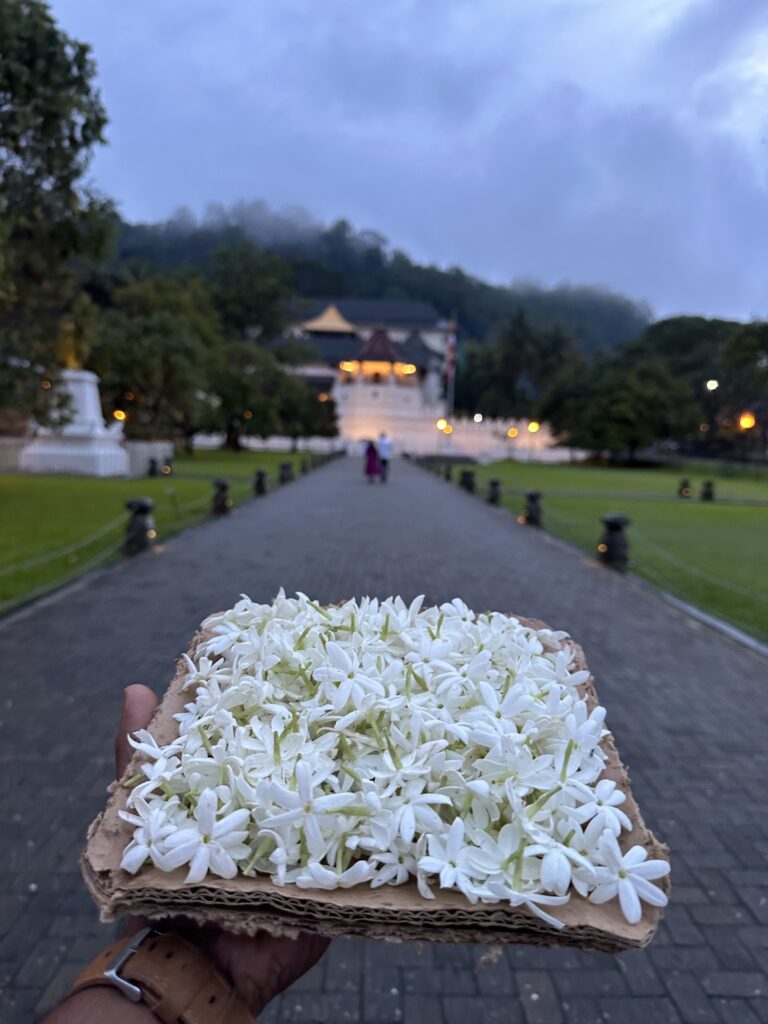
The Temple of the Sacred Tooth Relic (Sri Dalada Maligawa) in Kandy, with its golden roof, seen across the moat where lotus blossoms are offered.
Kandy is Sri Lanka’s hill-country capital and a sacred city revered by Buddhists worldwide. This UNESCO World Heritage city was the last stronghold of the Sinhala kings until 1815. At its heart lies the Temple of the Sacred Tooth Relic (Sri Dalada Maligawa), which houses the most important relic in Sri Lanka – a tooth of Gautama Buddha. According to legend, the Tooth Relic was brought from India in the 4th century CE, hidden in the hair of an Orissan princess named Hemamala. It became a symbol of Sri Lankan monarchy (whoever held the Relic had a divine right to rule). The current temple complex was built in the late 17th century by Kandyan kings, with later additions like the iconic golden canopy. Kandy remains the religious capital of Buddhism in the country, with thousands of devotees visiting daily to pay homage whc.unesco.org. Beyond the Temple of the Tooth, Kandy features charming colonial-era architecture, a scenic lake, and a rich living heritage of music and dance, largely due to the Temple’s cultural influence.
What Makes It Special: The Temple of the Sacred Tooth is often considered the pinnacle of Buddhist veneration in Sri Lanka. It is one of the most sacred places of worship in the Buddhist world. Inside, the golden casket containing the Tooth Relic is kept in an inner shrine and brought out for reverence during rituals. Visitors can’t see the actual tooth (it’s encased), but during the daily puja ceremonies (held at dawn, midday, and dusk), the chamber’s doors are opened and one can glimpse the golden stupa-shaped reliquary holding the relic. The atmosphere during puja is electric: drummers and trumpet players perform traditional “hevisi” music as devotees file past the relic chamber with lotus flowers in hand. The temple’s architecture is exquisite – a mix of Kandyan style and South Indian influences. Notable features include the Octagon (Pattirippuwa), an elegant wooden structure originally used by royalty that now houses sacred texts, and the Queens’ Bathing Pavilion by the lake (now a museum). The surrounding complex contains the Kandy Museum, royal palace ruins, and the International Buddhist Museum. Kandy’s star attraction is also the focal point of the Esala Perahera, Sri Lanka’s most spectacular festival. Every year (usually in July/August), a grand ten-night procession parades the Tooth Relic’s replica casket through Kandy’s streets on the back of a majestically adorned elephant. This festival, with its fire-dancers, drummers, and dozens of costumed elephants, is a centuries-old tradition held to invoke blessings of the Sacred Tooth. Being in Kandy for the Esala Perahera is often described as a once-in-a-lifetime experience – the city takes on a carnival atmosphere, yet deeply reverent. In quieter times, the temple grounds invite calm reflection; locals stroll the Kandy Lake promenade while monks in saffron robes feed the temple elephants. Kandy beautifully marries spiritual significance with cultural vibrancy, making it a highlight of any visit to Sri Lanka.
Best Time to Visit: Kandy’s upland climate is cooler and wetter than the lowlands. The December to April period is generally considered the best time to visit, offering comfortable weather (20–28°C range) and relatively less rain. This coincides with Sri Lanka’s peak tourist season, so the city will have many visitors – especially around late December holidays. If your schedule allows, target January to March for pleasant weather and slightly fewer crowds than December. Visiting during the Esala Perahera (dates vary based on the lunar calendar, usually July/August) is incredible for the festival, but do note that accommodation prices spike and you must book well in advance. Also, the city gets very crowded and some streets close in the evenings for the procession. If you do come for Perahera, try to get a reserved seat or arrange with a guide – it’s worth it to comfortably watch the spectacle. Outside of Perahera season, you can enjoy the temple rituals year-round. The morning puja (around 5:30–6:30am) is tranquil and less crowded, ideal for seeing the shrine without rush. The evening puja (around 6:30pm) is popular because the temple is beautifully lit with lamps and the night drumming is mesmerizing. Plan to spend at least a couple of hours in the temple and museums. Also, note that Kandy’s monsoon months are May–July (southwest monsoon) and October–November (inter-monsoon), which can bring heavy rain – not a deal-breaker, but carry an umbrella if visiting then. Overall, Kandy is a year-round destination, but for a mix of good weather and vibrant happenings, August (festival) or February–March (mild climate, post-festivities) are great choices.
How to Get There: Kandy is well-connected and typically part of the classic tour circuit. It lies about 115 km east of Colombo. By road, that’s approximately 3–4 hours drive (the route is scenic, winding up into hills). There are also comfortable intercity trains from Colombo Fort to Kandy, taking about 2.5 hours – a recommended option for its views of paddy fields and forests. If you’re coming from the Cultural Triangle, Kandy is about 90 km from Dambulla (2 hours by car). From the hill country side, it’s a 2.5-hour drive from Nuwara Eliya or Ella via roads that pass stunning tea plantations. Within Kandy city, the Temple of the Tooth is centrally located by the lake – most hotels are a short tuk-tuk ride away. The city can be crowded, so walking is often the fastest mode to get around central areas. Once at the temple, you’ll go through a security check (since this site is of high importance, security is tight). Note: large bags and cameras may need to be deposited at the entrance (photography inside is allowed in most areas but not of the relic itself).
Additional Insights: When visiting the Temple, remember to dress modestly – long pants or skirts and covered shoulders. You’ll need to remove shoes (there’s a supervised shoe counter for a small fee). The entry fee for foreigners is about LKR 1500, which grants access to the temple and museums. To fully appreciate the history, consider hiring an accredited guide on site (they can explain the rituals and legends, like how the Tooth Relic was once hidden from Portuguese invaders, etc.). Every Wednesday, there is a symbolic tooth cleaning ritual where the Relic is bathed (in absentia) with scented water and herbs – this holy water is later distributed to devotees for blessings. Kandy’s status as a UNESCO site stems not just from the Temple but the ensemble of cultural heritage around it whc.unesco.org. For example, just outside the Temple you can visit the Royal Palace ruins and the Audience Hall with its beautifully carved wooden pillars. Two important Buddhist monasteries, Malwatta and Asgiriya, are near the lake – their monks are the custodians of the Tooth Relic. If time permits, catch a Kandyan dance performance in the evening (several venues nearby host cultural shows); these dances are traditionally performed in honor of the Tooth Relic during Perahera. A few minutes’ walk away is the Kandy Garrison Cemetery, where a resident caretaker might regale you with colonial tales – a different slice of history. And don’t forget to enjoy a quiet stroll around Kandy Lake at dawn or dusk, when mist often shrouds the surrounding hills, making the white temple walls and golden canopy stand out in ethereal beauty. Kandy offers a holistic cultural experience – spiritual, historical, and sensory – truly a must-visit.
Official Website: For more details, the Temple has an official site Sri Dalada Maligawa – Temple of the Sacred Tooth Relic with visiting hours, event calendars, and background on rituals. The Kandy Tourist Information Center (near the Queen’s Hotel) can also provide maps and guidance for exploring beyond the Temple.
Sri Pada (Adam’s Peak) – The Sacred Footprint on the Mountain
At dawn, pilgrims throng the summit of Adam’s Peak (Sri Pada) after an overnight climb, eager to witness the famed sunrise and offer prayers at the sacred footprint.
Rising to 2,243 meters (7,359 ft) above sea level in the central highlands, Sri Pada – popularly known as Adam’s Peak – is a mountain pilgrimage site revered by multiple faiths. Its name “Sri Pada” means “Sacred Footprint” in Sinhala, referring to the footprint-shaped impression at the summit. Buddhists believe this is the left footprint of Lord Buddha, placed during his legendary third visit to Sri Lanka whc.unesco.orgcommons.wikimedia.org. Hindus consider it the footprint of Lord Shiva, while Christians and Muslims have historically associated it with Adam’s first step after being exiled from Eden – hence the name Adam’s Peak. This convergence of beliefs has made Sri Pada a holy site for centuries, attracting pilgrims from all backgrounds. Climbing Adam’s Peak is an awe-inspiring experience: a night ascent up thousands of steps, illuminated by strings of lights, alongside devotees chanting and offering incense. At the summit is a small temple that houses the Sacred Footprint (encased in a metal shrine). The goal is to reach the top by sunrise, when the sun’s rays cast a perfectly triangular shadow of the peak onto the clouds – a phenomenon considered miraculous by pilgrims. References to Sri Pada go back to ancient texts; even 14th-century traveler Ibn Battuta and Marco Polo wrote about its sanctity. It remains one of Sri Lanka’s most iconic spiritual adventures.
What Makes It Special: Adam’s Peak is unique because it’s a pilgrimage that blends physical endurance with profound spirituality. The ascent typically takes 3–4 hours, climbing ~5,500 steps along steep inclines. Along the way are resting points and wayside shrines; you’ll hear the ringing of the “hei yantra” bell at the top each time a pilgrim completes a climb (people traditionally ring it as many times as their number of summits). The atmosphere during the climb, especially in the high season, is magical – streams of pilgrims of all ages, some in white, some chanting “Sadhu, Sadhu”, vendors offering hot tea or herbal drinks in the chilly night, and the collective determination to reach the sacred summit. Upon reaching the top, you step onto a small plateau crowning the peak. Here stands the Sri Pada Temple, where the imprint (about 1.8 meters long) is venerated. Monks perform rituals at dawn, and the first sight of the sun rising over the clouds often moves people to tears. The famed shadow of the peak appears as the sun comes up – an optical illusion creating a triangular shadow cast onto the mist below【78†】. Pilgrims consider it a celestial tribute to the Buddha’s footprint. The sense of camaraderie on the mountain is heartwarming: Buddhists, Hindus, Muslims, and Christians may climb together, united by the mountain’s mystique. Many local pilgrims undertake the journey annually, some even barefoot as an act of devotion. At the summit, there’s also a view of the lush forested hills and winding rivers of the Peak Wilderness Sanctuary, which is a UNESCO-listed biodiversity area. The descent, in daylight, offers stunning vistas of tea plantations and valleys – and a chance to appreciate the feat you accomplished in the dark! Sri Pada is not just a hike; it’s often described as a life-changing spiritual trek, an embodiment of Sri Lanka’s religious harmony and the perseverance of faith.
Best Time to Visit: Adam’s Peak has a defined pilgrimage season, traditionally from December through May. During these months, the weather in the Peak Wilderness is relatively dry and the paths are kept lit and maintained. The peak months are January and February, when conditions are ideal and many locals climb during holidays. Avoiding the off-season (June to October) is highly advised – those months bring heavy rains, high winds, and no facilities on the trail (plus leeches in the forest). Even during season, it’s best to avoid full moon (Poya) days, weekends, and Sri Lankan New Year (mid-April) if you want to sidestep extreme crowds. On those days, tens of thousands climb and one can face bottlenecks on the stairs and a packed summit. For a more serene experience, choose a weekday a few days after a full moon. Start your climb around 1:00–2:00am to comfortably reach the top by sunrise (which varies around 5:30–6:00am). The temperature at the summit before sunrise can drop to 5°C or lower, so bring warm layers – a fleece or windbreaker is a must, and maybe a beanie. Also note, the first day of the pilgrimage season (Unduwap Poya in December) and the last day (Vesak Poya in May) often see special ceremonies and large crowds; those are culturally rich times to go, but expect a festival-like environment. For weather, January–March are clearest; by April/May occasional showers may start. However, some pilgrims deliberately go on full moon days or weekends for the lively atmosphere. If that appeals to you, by all means partake – just be prepared for a very slow ascent due to human traffic. No matter when you go, witnessing the sunrise from Sri Pada is worth every step. On a clear morning, you’ll see the sky light up in brilliant hues and the world below slowly emerge from darkness – an almost transcendental moment for many.
How to Get There: The most popular ascent route is from the village of Dalhousie (Nallathanniya) on the mountain’s northeastern side. Dalhousie is about 130 km east of Colombo. To reach it, most travelers take the train to Hatton (on the Colombo–Kandy–Badulla line) and then a taxi or bus for 1 hour (32 km) to Dalhousie. From Kandy, Hatton is around 2.5 hours by train or 3 hours by road. There are also direct buses from Colombo or Kandy to Dalhousie during season (check the timetable, as some run overnight for pilgrims). The village of Dalhousie has guesthouses, basic hotels, and shops – it serves as base camp. The trail from here is known as the Hatton Route and is the shortest and most commonly used path. Another route is from the Ratnapura side (Palabaddala), which is longer and less crowded, but also less developed (mostly used by locals and hardcore pilgrims). The Hatton/Dalhousie trailhead starts at Sripada Road near the trail market. You’ll pass the big arch and through a corridor of stalls selling supplies (flashlights, socks, snacks) and devotional items. About halfway up is “Indikatupana” (Needle Rock) where pilgrims stop to rest. Further up, you’ll encounter Mahagiridamba, the steepest section of steps right before the summit. Railings are provided, and during season the entire path is lit with electric lights – giving the mountain its nickname “Stairway to Heaven” at night. After your climb, you can return to Hatton and continue your journey to other hill country destinations. A pro tip: some opt to climb in the late afternoon, watch sunset, rest at the top, and then watch sunrise as well – but this means braving the cold overnight on the summit (the temple provides some shelter, but it’s very basic). Most will do the standard single overnight climb.
Additional Insights: The summit temple is jointly managed by Buddhist monks and Hindu priests – reflecting the multi-religious nature of the shrine. It’s customary for pilgrims to bring offerings: Buddhists might carry flowers or incense, Hindus might bring pooja trays. At the top, you can ring the summit bell – usually pilgrims ring it the number of times they’ve made the ascent (if it’s your first time, ring once; if it’s your fifth, ring five times, and so on). Don’t be shy; it’s part of the tradition!. The local name for climbing Adam’s Peak is “Siripa Yatra”, and it’s been done for over a thousand years – even ancient kings did the trek. The Peak Wilderness area is rich in flora and fauna (watch for butterflies, which in folklore are the spirits of the departed making pilgrimage). In fact, Sri Pada is at the center of a UNESCO Natural World Heritage site for its biodiversity. A poignant aspect of the climb is encountering pilgrims of all ages – from sprightly children to elderly men and women determinedly taking each step (sometimes with the aid of relatives). Their faith and determination is truly inspiring; many will greet you with “Ayubowan” (may you live long) or “Sadhu” (an expression of blessing) as you climb. If you need a break, there are tea shops (ambalamas) along the trail where you can get a hot ginger tea or even a snack of roti. Remember to stay hydrated and pace yourself – it’s not a race, and the climb can be tough on the calves! After the descent, your legs will likely feel like jelly for a day, but the spiritual exhilaration often masks the aches. The local community is very pilgrim-friendly – your participation in this age-old practice is welcomed with warm smiles. Sri Pada is a testament to Sri Lanka’s spiritual diversity and devotion. Standing on that peak, witnessing sunrise with devotees in prayer around you, is a moment where the divide between heaven and earth truly feels paper-thin.
Official Information: The organization that oversees the pilgrimage is the Sri Pada Temple Committee, which sometimes posts notices about the opening ceremony of the season and any trail advisories (in Sinhala, mostly). You can get practical tips from the Hatton Tourist Office as well. It’s also wise to check weather forecasts for Hatton/Maskeliya area before you go, to ensure clear skies for the climb. Regardless of faith, all are welcome to attempt Sri Pada – just remember to respect the sanctity at the top (no alcohol, no loud behavior, etc.). If you’re keen, join the pilgrims in a rousing chant of “Karunawai, Karunawai” on the way down – it’s a joyful chant asking for blessings for all.
Dambulla – The Golden Cave Temple
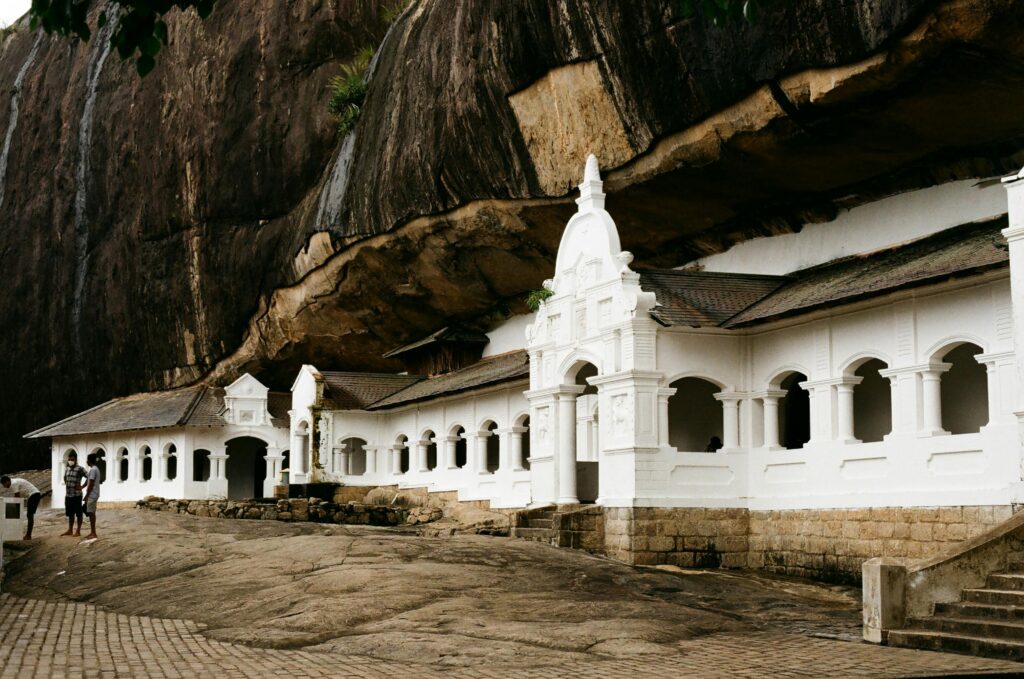
The white-painted facade of Dambulla Cave Temple clings to a giant rock overhang, sheltering a trove of Buddhist statues and murals within.
Overview: Dambulla Cave Temple, also known as the Golden Temple of Dambulla, is an ancient Buddhist temple complex set within five caves on a towering granite outcrop in central Sri Lanka. It is the country’s largest and best-preserved cave temple complex, earning it recognition as a UNESCO World Heritage Site. The history of Dambulla as a sacred site goes back to the 1st century BCE, when King Valagamba of Anuradhapura took refuge in these caves during a period of exile. After regaining his throne, the grateful king had the caves transformed into a magnificent temple. Over the ensuing centuries, particularly in the 18th century Kandyan era, successive kings embellished the caves with intricate Buddhist murals and dozens of statues. Today, the caves contain a total of 153 Buddha statues, 3 statues of Sri Lankan kings, and 4 statues of gods and goddesses, along with vivid ceiling and wall paintings that cover an astounding 2,100 square meters whc.unesco.orgworldheritagesite.org. Dambulla’s elevation (about 160 m atop the surrounding plains) offers sweeping views of the countryside, including the rock fortress of Sigiriya visible in the distance. As both an active temple and an art gallery of medieval Buddhist art, Dambulla is a must-visit highlight of Sri Lanka’s Cultural Triangle.
What Makes It Special: Entering the Dambulla caves is like stepping into a time capsule of Buddhist art and devotion. The caves are numbered Cave 1 through 5, each with its own character and treasures:
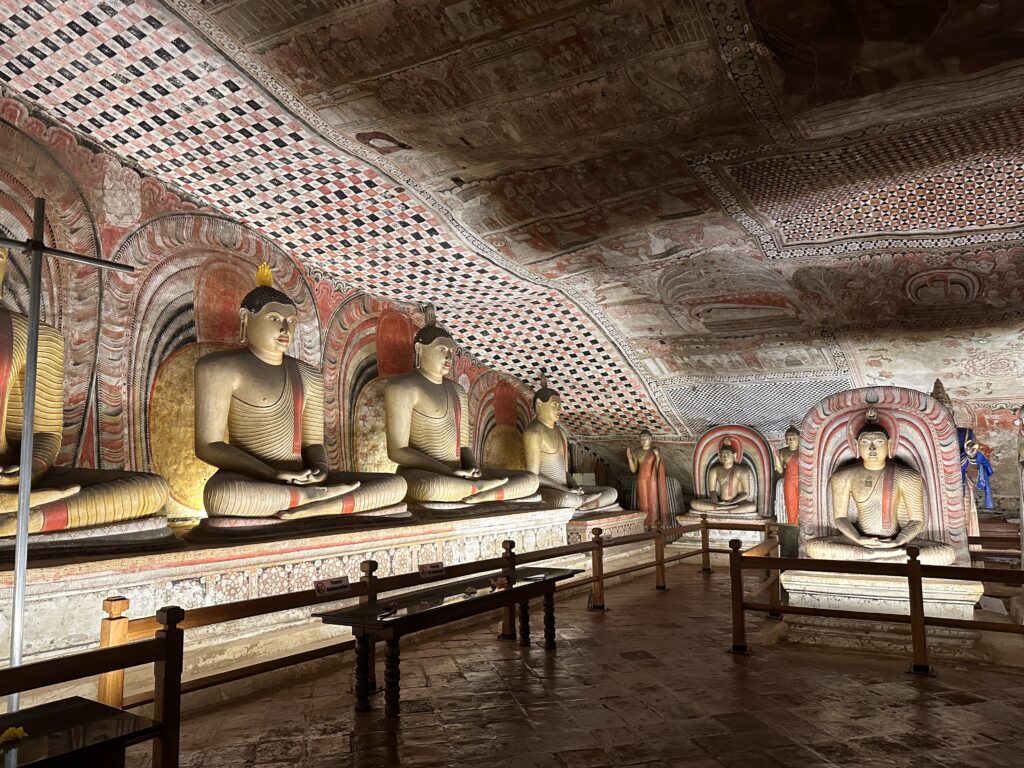
- Cave 1 (Devaraja Viharaya): The smallest cave, home to a 14-meter long reclining Buddha carved out of the rock. It’s serene and dimly lit, with Buddha’s gentle smile inviting calm. The ceiling around him is blackened from centuries of oil lamp smoke – a testament to long-term veneration.
- Cave 2 (Maharaja Viharaya): The largest and most impressive cave, often leaving visitors awestruck. It houses over 50 statues including a towering 15-meter Buddha, flanked by stalagmites that have been gilded. The cave’s paintings are incredibly well-preserved – every inch of ceiling and wall is covered in vibrant frescoes depicting scenes from Buddha’s life, Buddhist heavens and hells, and important events in Sri Lankan history. Look up to see repetitive patterns of Buddhist symbols and hundreds of Buddha images painted in rich reds, blues, and golds.worldheritagesite.org
- Cave 3 (Maha Aluth Viharaya): Renowned for its Kandyan-era paintings (dating to the 1700s), this cave’s art has a slightly different style, with more decorative floral borders. It features a beautiful statue of a bejeweled Buddha in dhyana (meditation) posture and statues of Kandyan kings who patronized the temple.
- Cave 4 and 5: Smaller caves with fewer sculptures; Cave 4 has a dagoba (stupa) and is often where monks meditate, and Cave 5 (the “New” shrine room) includes some newer Buddha statues (20th century) showing the continuous use of the temple.
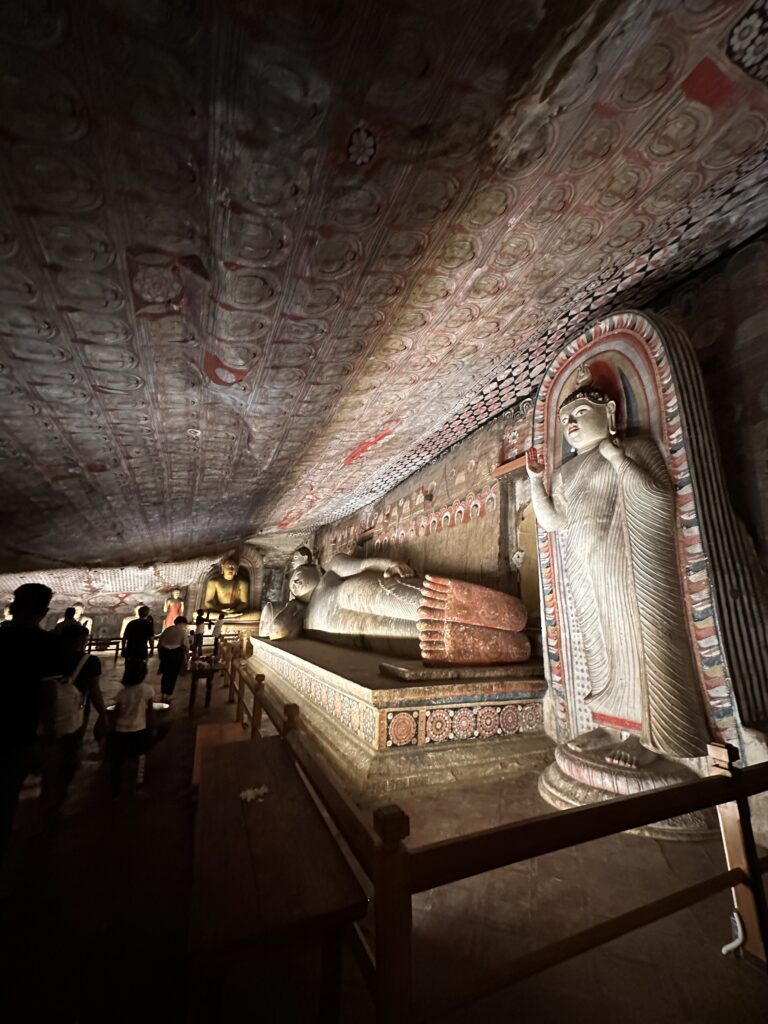
A unique aspect of Dambulla is how the caves maintain a naturally cool and humid atmosphere that has helped preserve the paintings for over 2000 years. The interplay of light and shadow from lamps creates a peaceful, otherworldly mood inside. Outside the caves, at the platform, you’ll find troops of macaque monkeys (cheeky but photogenic – hold onto your belongings!). The cave temple’s setting is also noteworthy – the contrast of the stark rock mountain and the white geometric facade (built in 1938) which runs along the cave front, is architecturally striking. Dambulla’s Golden Temple name partly comes from the gold gilding on some Buddha statues and partly from lore that the caves were once gilded entirely in gold leaf. There is also a modern Golden Temple Museum and a gigantic golden Buddha statue at the foot of the hill (you likely saw it on approach), but the true wonder lies in the ancient caves above. Dambulla has been an active monastery for over 22 centuries; even today, you might see monks and devotees lighting incense or chanting pirith in these caverns of tranquility. It’s this blend of sublime art, historical continuity, and sacred atmosphere that makes Dambulla an unforgettable site.
Best Time to Visit: You can visit Dambulla year-round, but mornings or late afternoons are recommended. Midday can be quite hot, and remember you’ll need to climb about 10–15 minutes of steps to reach the caves from the base. Starting around 8–9am avoids both the heat and the tour bus rush that often comes mid-morning. Alternatively, around 4pm (the site usually closes at 5:30–6pm) provides cooler temps and soft lighting ideal for photography (note: the cave interiors have artificial lighting). In terms of seasons, the region around Dambulla is generally dry most of the year (it falls in the “dry zone”). The hottest months are March and April where midday temperatures can exceed 35°C, so definitely aim for early/late day then. The rainy periods could be October–November and again December–January due to inter-monsoonal showers, but rains here are not as heavy as in the southwest – plus the caves themselves are sheltered. If you visit in January, you might coincide with the Dambulla Perahera, a smaller procession that parades around town from the cave temple, usually held in January or February (dates shift) to honor a relic. It’s charming with local dancers and elephants, nowhere near the scale of Kandy’s perahera but more intimate. Try to avoid public holidays like Sinhala New Year (mid-April) or Poya days if you want a quieter experience, since many local pilgrims come then. Footwear: you’ll be removing shoes at the cave entrance, so visiting in the cooler parts of the day means the rock surfaces won’t scorch your feet. Overall, aside from peak midday heat, Dambulla is not too affected by seasonal extremes – any time between November to April is excellent as part of Cultural Triangle tour (paired often with Sigiriya).
How to Get There: Dambulla is a major junction town in Central Province. It’s about 72 km north of Kandy (roughly 2 hours by car or bus) and 148 km from Colombo (around 4 hours by car on the highway). It sits on the main road that connects Kandy and Anuradhapura/Polonnaruwa, so many travelers pass through. If you’re in Sigiriya (for the Lion Rock fortress), Dambulla is only 20 km (30 minutes) southwest – many do it as a combined day trip. Regular buses run to Dambulla from Colombo, Kandy, and Anuradhapura. The cave temple is located just 2 km south of Dambulla town center. If coming by bus, you can get off in town and take a quick tuk-tuk ride to the temple entrance. If you have a driver or self-drive, note there are two entrances: the older one near the Golden Buddha statue (with a museum at base) and another newer parking area on the opposite side of the rock. Both require a climb up steps, but the Golden Buddha side is more commonly used by tourists (and has the ticket counter at base). Allocate about 1.5 to 2 hours for the entire visit. There is a nominal entry fee for foreigners (around LKR 1500). Guides at Dambulla can be hired at the entrance if you want detailed explanations of the art (they can point out, for example, the evolution of painting styles between caves and the stories behind certain murals). The climb up is not very strenuous – families and older visitors manage fine, just take your time on the steps and enjoy the view when you pause.
Additional Insights: Inside the caves, photography is allowed (no flash, please, to protect the ancient pigment). It’s astonishing how well-preserved the colors are, considering some paintings are over 500 years old (thanks to a stable microclimate in the caves). One fascinating detail: look for the drip-ledge carving at the top of cave entrances – ancient engineers cut grooves to prevent rainwater from seeping into the cave, thus preserving the artwork. In Cave 2, you’ll notice a small spring dripping from a crack in the ceiling into a vessel; legend says this water is miraculous and has never run dry – even in drought. You might also see offerings of fresh flowers placed in front of statues (please do not disturb these; it’s part of worship by locals). Given Dambulla’s continued religious use, you might be kindly asked by a monk to move or be quiet if they are about to start a prayer session – generally tourists and worshippers coexist peacefully in the space. Outside, enjoy the panoramic view: you can spot the giant rock of Sigiriya to the northeast and the Ritigala mountain range far in the distance on a clear day. Also, be mindful of the resident monkey troupe – they have a penchant for grabbing food or shiny objects. Keep your belongings close, and it’s best not to eat openly around them. If you have time after the caves, consider stopping by a local wood-carving shop or spice garden around Matale on your way south, as the region is known for those – they provide a nice cultural complement to your visit. Dambulla, being at a crossroads, also has a bustling market in town (one of the island’s biggest produce markets). While not directly related to the temple, a quick peek into the colorful fruit and vegetable market can be interesting to witness local commerce. By visiting Dambulla Cave Temple, you’re connecting with a site that has been a place of continuous worship for over two millennia worldheritagesite.org. The tranquility inside the dim caves, with Buddha statues watching over and flickering candlelight, offers a perfect moment for a quiet meditation or simply to absorb the sanctity of this sacred space.
Official Information: You can refer to the Central Cultural Fund’s page on Dambulla for historical background. The on-site museum (near the Golden Buddha) also has information plaques about the temple’s history and the UNESCO inscription. There isn’t a dedicated official website solely for Dambulla Cave Temple, but Sri Lanka Tourism’s Cultural Triangle brochures include Dambulla details. Remember to keep your ticket stub after purchase – they might check it at the cave entrance. And as a parting note: try clapping your hands once inside Cave 2 – some say the acoustics make it sound like a thousand tiny bats taking flight above (don’t worry, the resident bats are small and generally keep to themselves on the high ceilings!). Dambulla will undoubtedly leave you with a sense of awe at Sri Lanka’s artistic and spiritual heritage.
Additional Recommendations – Lesser-Known Gems
While the sites above are the marquee attractions for Buddhist heritage travelers, Sri Lanka is studded with lesser-known gems that can enrich your journey. Here are a few worth exploring:
- Polonnaruwa – The Ancient City: The medieval capital of Polonnaruwa (11th–13th century) is a UNESCO World Heritage Site that offers an impressive array of Buddhist landmarks. Wander among the ruins of royal palaces and monasteries in this extensive site. The highlight is the Gal Vihara temple, where four colossal Buddha statues are carved from a single granite outcrop – including a 14-meter reclining Buddha – masterpieces of Sinhalese stone carving en.wikipedia.organtiquebuddhastatues.gallery. Polonnaruwa’s quiet, park-like setting (often explored by bicycle) and its famous Rankoth Vehera stupa and Lotus Pond make it a worthy stop. It’s about a 1.5-hour drive east of Dambulla.
- Kelaniya Raja Maha Viharaya: Located just 10 km from Colombo, Kelaniya Temple is hallowed as a spot visited by the Buddha on his third and final visit to Sri Lanka en.wikipedia.org. The temple’s main stupa is believed to enshrine a gem-studded throne on which the Buddha preached here en.wikipedia.org. Kelaniya is also famed for its vibrant Duruthu Perahera pageant held each January, which features processions of dancers and elephants in honor of that Buddha visit. The temple interior is adorned with exquisite murals by artist Solias Mendis, depicting scenes from Buddhist history and lore. If you’re flying in or out of Colombo, Kelaniya is an easy and enriching add-on.
- Mahiyangana: In the Uva Province lies Mahiyangana, site of the first ever visit of the Buddha to Sri Lanka (eight years after Enlightenment). Here, the Mahiyangana Stupa was built during the Buddha’s lifetime – it originally enshrined a lock of the Buddha’s hair given to local chieftain Saman en.wikipedia.org. Over time, it was enlarged by kings and now stands as an important pilgrimage spot, especially for Buddhists paying respects to the very genesis of Buddhism on the island. A colorful annual perahera also takes place here in July/August. Mahiyangana is about 4 hours from Kandy, en route to the east coast.
- Nagadeepa (Nainativu Island): Off the Jaffna Peninsula in the north, Nagadeepa is one of the Solosmasthana – the Buddha’s second visit was to this island to reconcile two feuding Naga kings en.wikipedia.org. Today, a serene Nagadipa Purana Viharaya commemorates that event, and nearby is also a Hindu shrine (Nagapooshani Amman Temple), showcasing the island’s multi-religious harmony. Reaching Nagadeepa involves a short ferry ride from Jaffna’s coast. It’s a long way north, but if you venture to Jaffna, this island’s calm and the tale of Buddha’s diplomacy among the Nagas is quite fascinating.
- Others to Consider: If time permits, Tissamaharama in the deep south (with its colossal ancient stupa and as a gateway to Kataragama sacred town), Muthiyangana in Badulla (another site of Buddha’s legendary visits), and Aukana in North Central (home to a magnificent 12m-tall standing Buddha statue carved from rock) are all rewarding stops for true aficionados of Buddhist art and history. Each has its own local legends and charm, often without the crowds.
Each of these lesser-known sites offers insight into different chapters of Sri Lanka’s Buddhist story – from ancient kingdom artistry to far-flung local devotion. Including one or two in your itinerary can give you a more rounded experience, and often a peaceful one, as you may have these sites almost to yourself.
Closing – Craft Your Spiritual Journey
Sri Lanka’s sacred Buddhist sites are more than just monuments; they are living testaments to a rich spiritual heritage that continues to inspire travelers and pilgrims alike. From meditating under the Bodhi tree in Anuradhapura, to climbing the storied steps of Adam’s Peak in the pre-dawn hush, each experience is imbued with a sense of wonder and enlightenment. These journeys take you through lush landscapes, historic ruins, and vibrant living rituals – a blend of culture and devotion unique to the Pearl of the Indian Ocean.
If you’re inspired to visit these sacred sites, we can craft a custom travel itinerary just for you. Embark on your own pilgrimage – whether a leisurely cultural tour or an immersive spiritual retreat – and let us handle the details. We’ll ensure you connect with local experts, find comfortable accommodation (from eco-friendly lodges to heritage hotels), and travel at your own pace. Make the most of your Sri Lankan adventure with a journey tailored to your interests, be it photography, meditation, or history.
Feel the blessings of Sri Lanka’s Buddhist heritage wash over you as you explore. Each temple and trail has stories to tell and blessings to bestow. Ready to begin? Contact us to start planning your unforgettable trip. May your travels be safe, your experiences profound, and your heart touched by the serenity of Sri Lanka’s sacred sites. Theruwan saranai! (May the Triple Gem bless you!).
